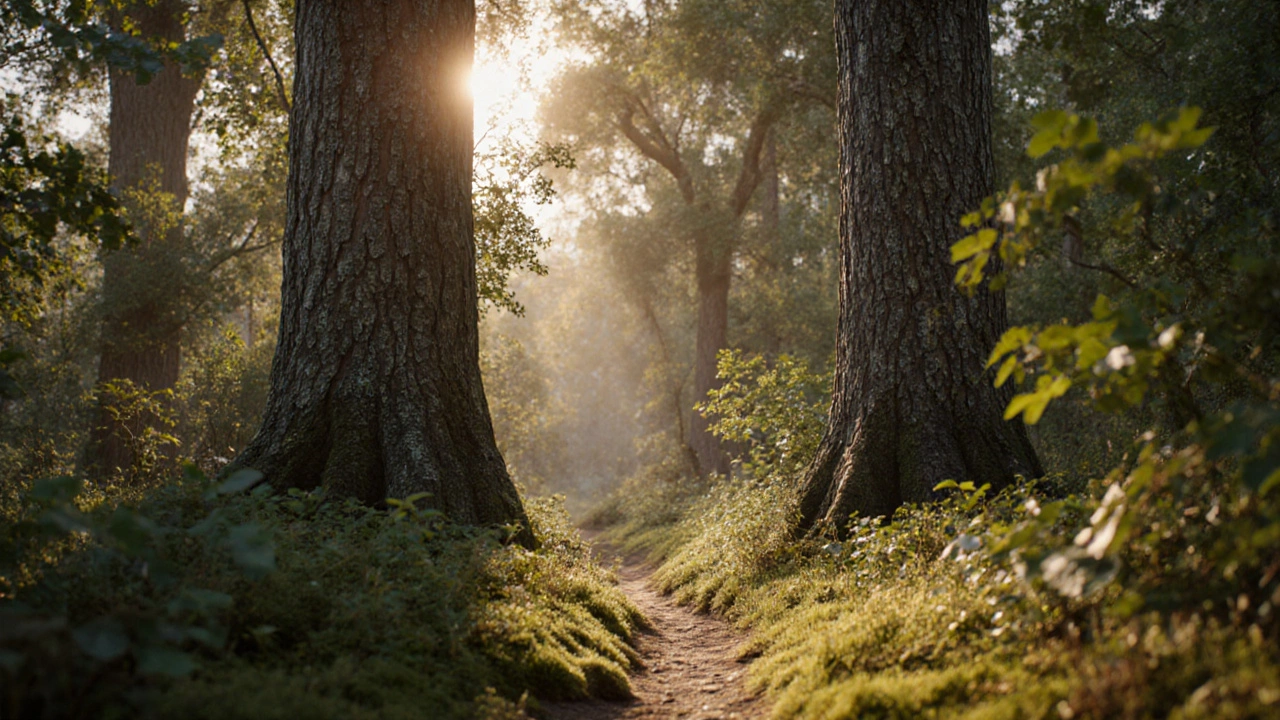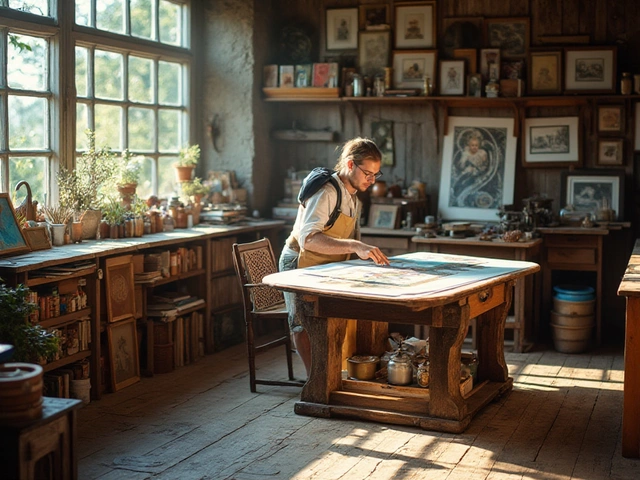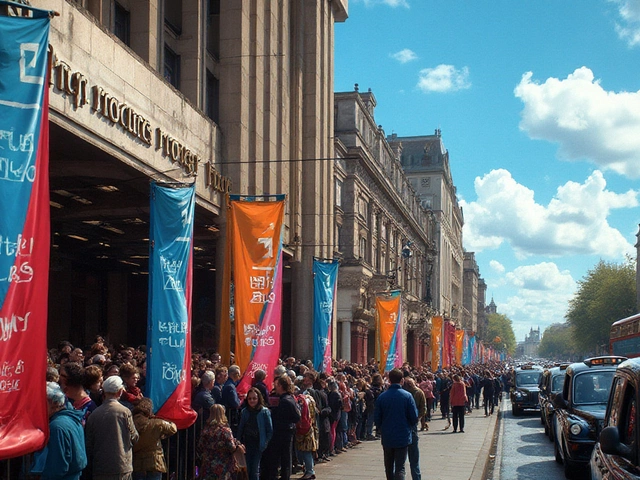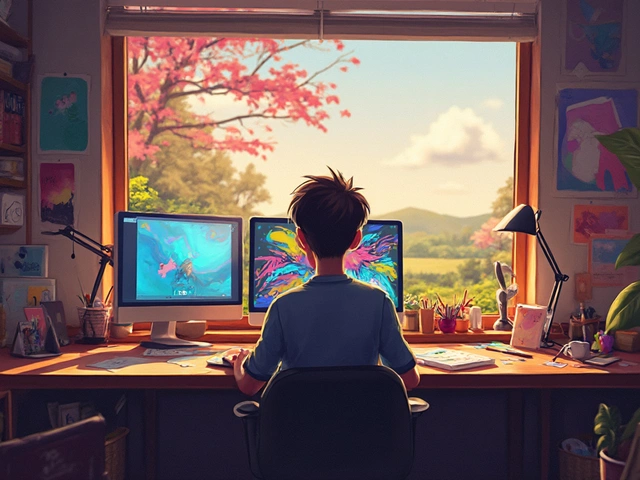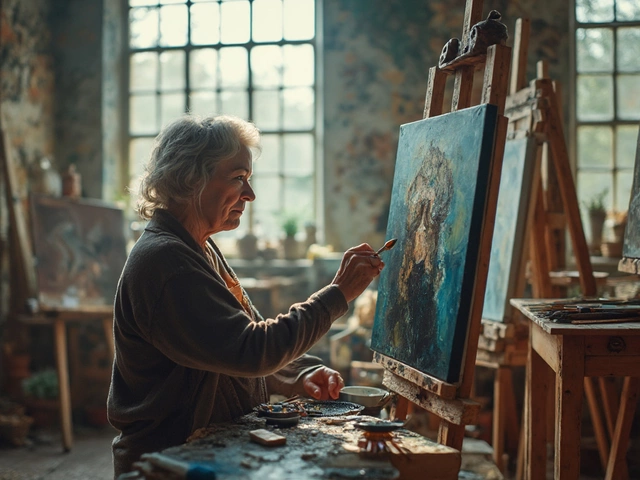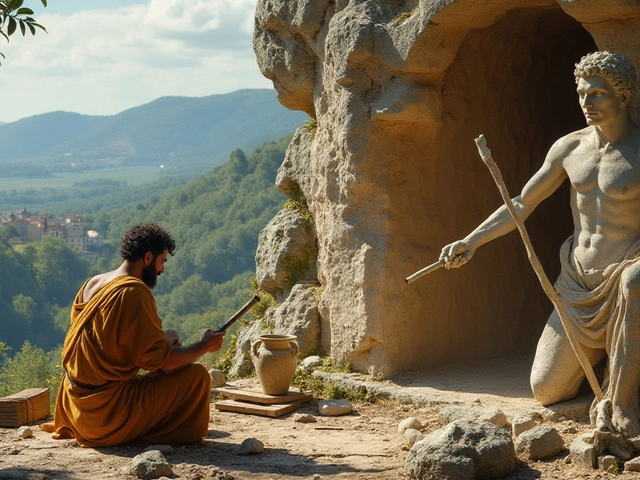Landscape Painting Style Selector
Compare Styles
Click on any style below to learn more about it:
Realism
Photographic detail and accurate perspective
Impressionism
Loose brushwork and emphasis on light
Abstract Landscape
Non-figurative shapes and expressive color
Tonalism
Muted tones and atmospheric mood
Plein Air
Outdoor painting with true-to-life color
Photorealism
Hyper-detail based on photographs
Quick Summary
- Realism delivers photographic detail; ideal for artists who love precision.
- Impressionism captures light and mood with loose brushwork.
- Hudson River School offers dramatic, expansive vistas rooted in 19th‑century America.
- Pleinair focuses on painting outdoors for immediate color and atmosphere.
- Abstract landscape drops recognizable forms in favor of color, shape, and feeling.
When you ask, “what is the best style of painting in landscapes?” the answer depends on what you want to say with your canvas. Some artists chase exact detail, others chase the feeling of a sunrise. Below we break down the most popular landscape styles, compare their strengths, and give you a checklist so you can pick the one that matches your artistic goals.
What is a Landscape Painting Style?
Landscape painting style is a distinct visual approach that dictates how an artist interprets natural scenery. Styles differ in brushwork, color palette, level of realism, and underlying philosophy. Knowing the core attributes helps you decide which style resonates with your personal vision and technical comfort.
Major Landscape Styles Explained
Below are the eight most influential styles you’ll encounter in galleries, textbooks, or online tutorials.
Realism
Realism aims for photographic fidelity. Artists study light, texture, and perspective to reproduce every leaf, rock, and ripple exactly as the eye sees it. The style peaked in the 19thcentury with painters like John Constable and today lives on in hyperrealist artists such as Robert Longo. Use realism when you love technical precision and want viewers to feel like they could step into the scene.
Impressionism
Impressionism sacrifices detail for mood. Loose, visible brushstrokes and a bright, often complementary palette convey the fleeting qualities of light. Claude Monet’s series of haystacks and sunrise paintings exemplify the style. Pick impressionism if you enjoy painting en pleinair and want to evoke atmosphere over exact form.
Hudson River School
This American movement (mid‑1800s) blends romanticism with meticulous detail. Artists such as Thomas Cole and Albert Bierstadt rendered grand, often idealized vistas of the New York wilderness. The hallmark is dramatic lighting (often a sunrise or sunset) and a sense of the sublime. Choose this style if you love epic, story‑like landscapes that feel both realistic and mythic.
Tonalism
Tonalism emerged in the late 19thcentury, focusing on muted, harmonious color schemes to create mood and mystery. Artists like James McNeill Whistler used limited palettes-often shades of gray, brown, or blue-to suggest fog, twilight, or dusk. This style works well when you want subtle emotional depth without bright contrast.
Pleinair
Technically a practice rather than a static style, pleinair means painting outdoors directly from observation. The approach forces rapid brushwork, captures true atmospheric colors, and often results in a fresh, spontaneous feel. Modern practitioners often adopt a loose‑impressionist look, but the core idea is working in the field, rain or shine.
Abstract Landscape
Abstract landscapes discard literal representation. Instead of trees and mountains, you see shapes, color fields, and gestural marks that suggest terrain. Artists like Helen Frankenthaler and Gerhard Richter let emotion guide the composition. Choose this style if you prefer expressive, non‑figurative work that still hints at nature.
Photorealism
Photorealism pushes realism to the extreme by using photographs as the sole reference, often reproducing the image down to individual pixels. Contemporary artists such as Gregory Thielker specialize in rain‑slicked road scenes that look like high‑resolution photos. This style demands meticulous technique and patience.
Contemporary Landscape
Today’s landscape artists blend old‑world techniques with new media, digital references, and cross‑genre experimentation. Think of artists who combine watercolor washes with acrylic details, or who overlay collage elements onto painted horizons. The style is fluid-there are no hard rules-making it perfect for artists who like to mix and match.
Comparison Table: Choose the Right Style for You
| Style | Typical Era | Key Characteristics | Typical Palette | Notable Artists | Best For |
|---|---|---|---|---|---|
| Realism | 19thC - present | Photographic detail, accurate perspective | Naturalistic colors | John Constable, Andrew Wyeth | Technical precision, educational demos |
| Impressionism | 1870s-1900s | Loose brushwork, emphasis on light | Bright, complementary hues | Claude Monet, Pierre‑Augustin Renoir | Capturing mood, outdoor sessions |
| Hudson River School | 1820s-1870s | Grand vistas, dramatic lighting | Earth tones with luminous sky | Thomas Cole, Albert Bierstadt | Epic, narrative landscapes |
| Tonalism | 1880s-1910s | Muted tones, atmospheric mood | Grays, blues, browns | James McNeil Whistler, George Inness | Subtle, emotive scenes |
| Pleinair | Mid‑1800s - today | Quick execution, true‑to‑life color | Varies with weather | Camille Pissarro, John Singer Sargent | On‑site painting, rapid sketches |
| Abstract Landscape | 1940s - present | Non‑figurative shapes, expressive color | Bold, unconventional mixes | Helen Frankenthaler, Gerhard Richter | Emotional impact over realism |
| Photorealism | 1960s - present | Hyper‑detail, photograph based | Exact photographic colors | Chuck Close, Gregory Thielker | Showcase technical virtuosity |
| Contemporary Landscape | 2000s - present | Mixed media, genre‑bending | Eclectic, often pastel‑heavy | David Hockney (late works), Erin Hanson | Experimental, personal expression |
How to Pick the Style That Works for You
Think of choosing a landscape style like picking a pair of shoes. You consider comfort, occasion, and how much you want to stand out. Use the following checklist to narrow down your choice:
- Goal: Do you want to teach a class, sell prints, or just explore a new technique?
- Skill level: Realism and photorealism demand high technical control; impressionism and abstract are more forgiving.
- Time commitment: Pleinair sessions are short bursts, while studio‑based realism can take weeks per canvas.
- Emotional intent: If you want viewers to feel serenity, Tonalism or soft impressionism works; for drama, Hudson River School excels.
- Materials: Watercolor pairs well with tonalism, while oil is traditional for Hudson River School and realism.
Answering these questions will point you toward a style that aligns with both your creative voice and practical constraints.
Practical Tips for Mastering Your Chosen Style
Once you’ve settled on a style, these focused exercises will accelerate your progress.
- Realism: Practice drawing from high‑resolution photos; focus on accurate proportions and value gradients.
- Impressionism: Set a timer for 5‑minute studies; limit yourself to three colors per piece to force creative mixing.
- Hudson River School: Sketch dramatic horizons on location; then enlarge the composition in the studio, adding fine details.
- Tonalism: Paint a series of twilight scenes using only grayscale and one accent hue.
- Pleinair: Carry a portable easel, a limited palette, and a lightweight sketchbook; work in all weather conditions to learn how light shifts.
- Abstract Landscape: Start with a single color block representing sky, then layer shapes that suggest landforms without outlining them.
- Photorealism: Project a photograph onto canvas and trace key edges, then build up texture layer by layer.
- Contemporary Landscape: Combine a base watercolor wash with over‑painted acrylic details and a collage of leaf stamps.
Common Pitfalls and How to Avoid Them
Every style has its own snags. Below are the most frequent mistakes and quick fixes.
- Over‑detailing (Realism): Resist the urge to render every blade of grass; step back often to see the overall composition.
- Flat light (Impressionism): Observe how the sun moves; vary warm and cool tones to give depth.
- Too dramatic (Hudson River School): Keep the scene believable; use reference photos to avoid fantasy‑like proportions.
- Monotonous mood (Tonalism): Introduce a subtle accent color to break uniformity.
- Rushed pleinair sketches: Prioritize mastering basic shapes first; later add color nuances.
- Abstract confusion: Start with a photograph, then abstract key shapes rather than painting randomly.
- Photorealism paralysis: Work in sections; treat each area as a separate mini‑painting.
- Mixed media chaos (Contemporary): Choose a dominant medium, then add secondary elements sparingly.
Mini‑FAQ
Frequently Asked Questions
Which landscape style is easiest for beginners?
Impressionism and tonalism are great entry points. They let you focus on color and mood without obsessing over fine detail, so you can see progress quickly.
Do I need special supplies for each style?
Not always, but certain mediums pair naturally. Oil paints suit realism and Hudson River School; watercolor works well for tonalism; acrylics give flexibility for contemporary mixed media. The key is to experiment with what feels comfortable.
Can I blend styles in one painting?
Absolutely. Many modern artists mix impressionist brushwork with realistic detail in the foreground, creating a balanced visual narrative.
How long does it take to master photorealism?
It varies, but expect at least a year of dedicated practice, focusing on value studies, glazing techniques, and working from high‑resolution reference images.
Where can I find inspiration for pleinair painting?
Local parks, coastal cliffs, and city rooftops all offer changing light conditions. Even a backyard garden can provide interesting shadows and color shifts throughout the day.
Next Steps: Put Your Choice into Action
1. Pick a style from the table above that matches your goal.
2. Gather the recommended materials (see the tip list).
3. Choose a simple subject-a hill, a tree, or a street corner.
4. Follow the focused exercise for that style.
5. Review your work after 24hours; note what feels right and what needs tweaking.
6. Repeat with a new subject, gradually increasing complexity.
Remember, the "best" style isn’t a universal rule-it’s the one that lets you express what you see and feel most powerfully. Try a few, note the emotional payoff, and settle on the one that feels like home on your canvas.
